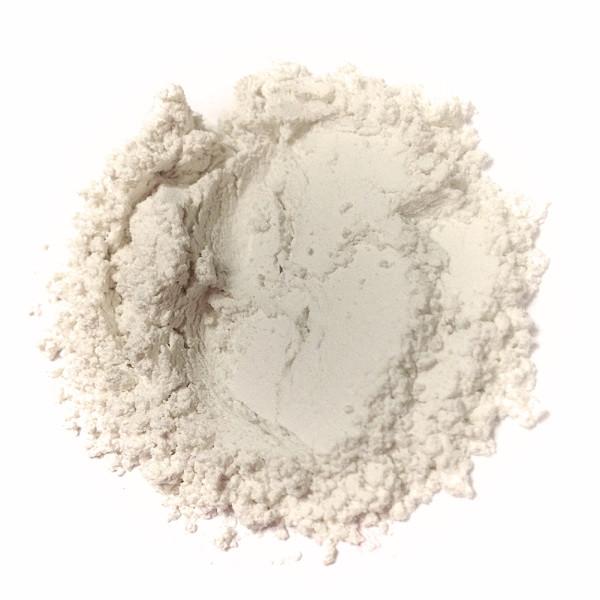Thinking about sealing your leaking dam yourself?
Here’s a quick guide to DIY dam sealing
Let’s step back for a moment and consider the problem of leaking dams holistically (e.g. the parts of a solution are intimately interconnected and explicable only by reference to the whole)
Sealing dams is easy. I’ve been doing it for 15 years.
But people try to make it seem hard and complicated.
Long story short, there’s a straight line from leaking to not leaking.
And here it is.
There are only fours ways to seal a dam.
- Kaolinite
- Liners
- Polymer gels
- Bentonite
One is very expensive won’t continue to operate effectively after 10 years
One I would never use
One of them is great – but you have to be really lucky
And that leaves only one I would recommend
Here’s the lowdown
1. Kaolinite Clay

Kaolinite is a clay mineral.
Technically, it is a layered silicate mineral, with one tetrahedral sheet of silica linked through oxygen atoms to one octahedral sheet of alumina octahedra.
Long story short – it is white clay.
Clays that are rich in kaolinite are known as kaolin or china clay. If you are blessed to have this on your property, then you should use it.
Because there’s nothing better.
No dam constructed with Kaolinite will ever leak because Kaolinite is the ultimate coagulate clay. It absorbs water, and it doesn’t release it. And water stored in a coagulate media stops water transfer (seepage)
Kaolinite also has low shrink–swell qualities, which means it’s mass changes little when wet or dry, so it doesn’t crack under heat stress
Kaolinite also has a low cation-exchange capacity (1–15 meq/100 g)
This means that it has the ability to hold onto essential nutrients and provides a buffer against soil acidification.
In most situations, you have to go down two metres to find Kaolinite, because it lie below the top soil and red clay layers. If you don’t have Kaolinite on your property, then you move to options 2 & 3.
2. Liners
Liners are the best they will ever be on Day 1 of installation.
Liners degrade over time. That is an inescapable fact.
Also, liners are easily compromised by a single tear in the material caused by animal activity, machine mishap or a single incorrectly welded seam.
They are expensive per square metre
They are ugly (unless you love the look of black plastic on dam banks)
The production process of liners contributes to greenhouse gases
If these qualities are not acceptable to you, or not a net positive for your children’s future – then you move to option 3

3. Polymer gels

In 15 years of constructing dams, and fixing broken dams that are leaking – I have NEVER come across a single dam that has been sealed using polymer gels. I have talked with hundreds of people who have used it. I have tested it on my own dams If this stuff worked, I would use it.
End of story. But to never come across someone who has successfully applied it and stopped seepage or leakage is worrying. And that is because I have to dig this gooey rubbish out of dam walls, tear down the whole wall and rebuild it.
That costs the owner thousands of dollars and it creates a huge amount of distress. These gels leave a slimy, shiny witness mark – and it’s residue has the consistency of dessecated jellyfish. This is a case of someone trying to improve on nature by mixing a bunch of things together.In my experience, they have not succeeded.
As an industry veteran, speaker and writer – I am outspoken about this product because it is being marketed to people who don’t know the basic principles of dam construction and effective hydraulic coagulation.I don’t believe this is good for our industry. Others may disagree.
Representatives of polymer gel distributors certainly do – because they have threatened to sue me for saying such things They obviously don’t line up behind my opinion.
I have said to them – “show me a success and I’ll alter my position”.They are yet to take me up on that offer. I continue to say what I say because these are the facts as I have encountered them, and it is my lived experience with this product.
Besides this……. It is expensive per square metre compared to alternatives
Polymer gels come in two forms – ‘natural’ polymers or synthetic polymers
‘Natural’ polymer gels are created from collagen, hyaluronate, fibrin, alginate, agarose, chi-tosan, and cellulose.
Synthetic polymers are derived from petroleum, and their low cost has its roots in the ingenuity of the chemical engineers. If proven success and low risk are important to you – you move to option 4

4. Bentonite

Bentonite is God’s solution to sealing dams. And he was on his game that day.
He made it:
- Cheap
- Organic
- Easy to apply
- Gets better every day it is in place
- Is non-toxic
- Is so therapeutic you can eat it
- Contributes to Australia’s economy
- Has been used thousands of years
I have used it for 15 years on 76 dams, and not a single dam has re-leaked. Bentonite for dam sealing.
I have used it on my own 14 dams (like I have polymer gels) – and not one leaks.
So, if you come to the decision that this solution has a lot of pros, and not a single con – you then ask the following two questions.
How can I be 100% confident that it will work?
And if I have that confidence – how do I apply it so that it works?
The first thing is – scale is irrelevant.
There is no difference between sealing a 100 gigalitre dam and a 2 megalitre dam. And that is because you operate on a square metre footprint.
Every square metre is done exactly the same.
- 30kgs per square metre
- Worked down to 600mm and combined with the existing media
- Wet in
- Compact
- Seal
The only difference is the number of square metres. But to achieve guaranteed success, you have to empty the dam and apply when the dam floor drys out.

Common questions
1. How can we make sure the entire dam is covered in Bentonite?
Very easy.
And there are 4 ways you can do it.
It depends on the size of the dam and your access to machinery
These are all dry dam application methods
- For small dams, lay the Bentonite bags out in a metre by metre grid, then split the bags and spread
- For medium dams, draw up a grid pattern, and have a tractor with a bucket lay out the required amount per square metre into specific targets on the grid (this is the most used method – but if windy, chose method (a) because product sits in bulker bags until used)
- For large dams, broadcast using excavators performing precise one direction rotations with continually decreasing radius. The excavators have a 6 metre reach, so draw up a ground plan with 12 metre circles and overlap them. Then put an excavator in the middle of each circle. Make sure overlap is achieved and the corners are filled in (can’t be used in windy conditions)
- For very large dams, lay bulk Bentonite out via scrapers which have the ability to lay out metered tonnage rates (requires flat ingress & egress. Not suitable in windy conditions)
I build into all these spread methods a fail safe strategy.
I have achieved seal with 15 kgs per square metre, so I over-engineer the spread rate to 30kgs per square metre to reduce the risk of non-uniform spread to zero.
That’s cheaper than doing the job again because you didn’t use enough.
If you have a major operational water installation like a mining company, and you need to quantify and qualify the problem before taking action – and then measure the seepage/leakage results to confirm that they are within acceptable performance parameters – you can use many methods:
- Seepage sensors under the dams
- A time domain reflectometry (TDR)-based system for the non-invasive detection of leaks
- A fibre-optic automated seepage monitoring system
- DamTemp is software that provides an evaluation tool for analysing seepage in a limited zone through the dam core or floor. The software calculates the thermal fields in two dimensions
- Borehole radar is a useful high-resolution tool, suitable for deep leakage detection and evaluation
- Radar tomography makes a high-resolution identification of the hydraulic seepage paths
- ERT (Electrical Resistivity Tomography) is efficient at detecting dam leakage
- Ground penetrating radar (GPR)
- Isotope tracing is an effective way to detect fluid flow
- Crossline resistivity tomography
- Electrical resistivity surveys using the dipole-dipole array
- Resistivity sounding and seismic refraction survey
- Various types of resistivity profiling (including terrain EM surveys)
- Distributed Temperature Sensing (DTS) using optical fibres
If you have critical water infrastructure, and you have to prove to the powers that be that this is a method worth investigating – , how do achieve proof of concept to convince your board of directors without committing to the major installation?
That is very easy
You build 2 dams that replicate your main dam at a scale of 1 to 100. Why two dams?
- The first dam replicates the main dam exactly same compression compaction. Same ground media. Same wet values.
- The second dam allows you to sleep at night because it represents performance competence in an exaggerated worst case scenario. This dam is un-compacted and uses a ground media far more porous and unstable than the actual dam, and uses a lower spread rate of 20kgs per square metre.
When the Bentonite seals the worst case scenario dam (as I know it will) – you will then have complete confidence that the main dam operations will be risk free.
The analogy I would use is this.
Put some water in a paper coffee cup
Does it leak?
Now put some water in a glass – but before you do – ask yourself this question
Do you believe that the glass will more successful at holding the water than the paper cup due to it’s proven strength, density and imperviousness to flow-through?
Would you say you’re confident that the risk of the glass leaking is zero – if it has been made correctly?
That’s what scaled installations do. They create confidence
Once you do a scaled installation and collect, analyse and collate the seepage data – you’ll have all the information you need to convince a board of directors to spend millions on your solutions.
In conclusion
That’s it. Job done. Sorted.
This is what I do every day.
It’s not rocket science if you know what you’re doing.
If you need any more information, please don’t hesitate to ask.



